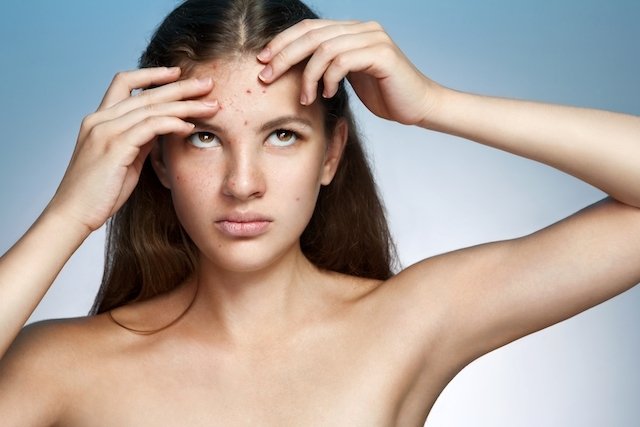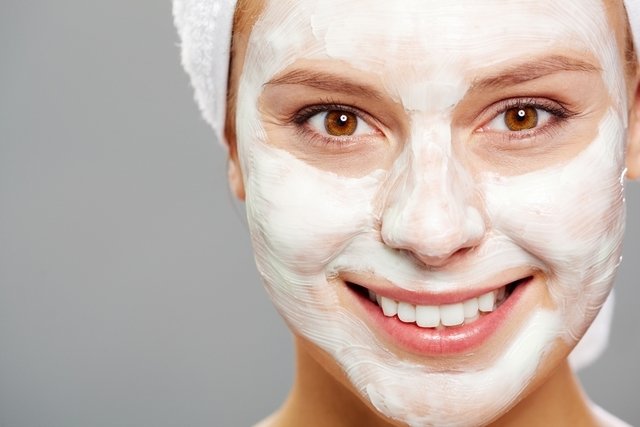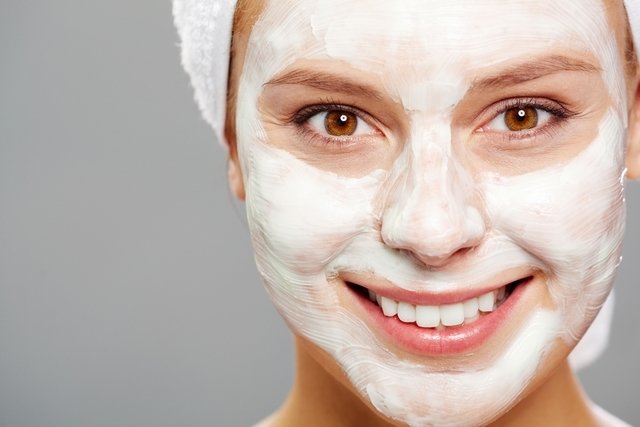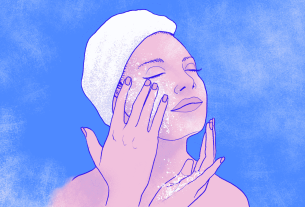Acne generally appears on oily skin, as it is caused by an exaggerated release of sebum by the sebaceous glands, leading to the proliferation of bacteria that leads to inflammation of the follicles.
Although it is rare, some people who have acne and oily skin may experience dry skin, having difficulty finding products that satisfy the need for hydration and pimple treatment.
There are also cases of people who have dry or dehydrated skin, but who suffer from acne, probably because they have sensitive skin, whose skin barrier is insufficient to protect it, making it more susceptible.

Is it normal to have acne with dry skin?
Some people who experience dry skin may also have acne, as they have sensitive skin and a skin barrier that is insufficient to adequately protect the skin.
Furthermore, these cases can also involve oily but dehydrated skin, which may be oily and shiny but lack water. This can often happen due to certain treatments that are carried out to treat acne.
Take the online test and find out what your skin type is.
dehydrated skin
Oily skin can become dehydrated due to water loss through enlarged pores, which are very characteristic of oily skin. Furthermore, people with oily skin use products that are too abrasive, which remove the skin’s natural protective oils.
Dehydration is often confused with dry skin because it causes similar symptoms. However, while dry skin is skin that produces an insufficient amount of natural oils, being malnourished skin, dehydrated skin has an insufficient amount of water, but can produce excess oil, which leads to the development of acne.
Therefore, when people who have acne feel dry skin, it generally means that their skin is dehydrated, lacking water, which is confused with malnourished skin, which lacks fat, known as dry skin.
Dry skin
In any case, if dry skin is sensitive or not well treated and if very aggressive soaps are used, it can become weakened and susceptible to the entry of bacteria and chemicals that lead to a change in the function of the skin’s barrier and the activation of the skin’s response. immune system, causing inflammation and the formation of so-called pimples.
Furthermore, they can also appear due to clogging of pores, which can be caused by excessive use of cosmetic products.
First mista
Dry skin can also be oily skin, which is known as combination skin. This type of skin is generally oily in the T area, which is the forehead, chin and nose region, and is dry on the rest of the face. Thus, combination skin may have acne in the T-zone due to excess sebum production, but remain dry on the cheeks, for example.

How to treat this problem
The ideal is to evaluate case by case, which can be done with the help of a dermatologist, as the treatment will depend on the skin type.
1. Dehydrated skin with acne
Before choosing the appropriate products for this situation, it is important to know that dehydrated skin is skin that needs water and ingredients that retain it in the skin. However, these products cannot have too much oil in the formulation, so as not to make acne worse.
Therefore, the ideal is to choose a face wash product that respects the skin’s physiology, such as La Roche Posay’s Effaclar facial cleansing gel or Bioderma’s Sebium micellar water and a hydration product with or without mattifying action, such as Bioderma’s Sebium Global emulsion or the Effaclar Mat anti-oil facial moisturizer, which should be used daily, morning and night.
In addition, you should exfoliate about twice a week and a purifying mask and a moisturizing mask about once a week. You can also use a solution, which is applied locally to pimples in the form of a stick, and a serum for dehydrated skin from Skinceuticals or Avène, for example, which is applied daily before moisturizer.
If the pimples are inflamed, you should avoid physical exfoliants, which are those that have small spheres or sand in their composition, so as not to worsen the inflammation and opt for chemical exfoliants that have alpha hydroxy acids in their composition, such as Sébium Pore Refiner from Bioderma.
If the person uses makeup, they should always opt for an oil-free foundation, which usually contains the indication on the label “oil-free”.
2. Combination skin with acne
Combination skin with acne needs to be nourished and hydrated, which is difficult to achieve with just one product, because either that product gives the skin too much oil, making acne worse, or it gives it too little, leaving the skin drier.
What you can do is choose a washing product that respects the skin’s physiology, such as Clinique’s cleansing gel or Bioderma’s Sensibio H2O micellar water and insist more on the T-area, to remove excess oil and choose a cream moisturizer whose label indicates for combination skin, which is generally available in all brands.
Furthermore, the exfoliation can be done in the same way as on dehydrated skin and the purifying mask can be applied only to the T area. In cases where these measures are not sufficient, an anti-acne moisturizer can be applied to the T area and another different one. on the rest of the face, which nourishes the skin, such as Avène’s Hidrance Optimale moisturizing cream.
If the person uses makeup, they should always opt for an oil-free foundation, which usually contains the indication on the label “oil-free”.
3. Dry skin with pimples
In situations where the person actually has dry skin and some pimples appear, the products to use are a cleansing gel or cream for dry skin, such as Bioderma’s Sensibio H2O micellar water or Vichy’s Pureté Thermale cleansing foam and a cream also for dry skin, such as Avène’s Hidrance Optimale moisturizer or Bioderma’s Sensibio cream, for example. See also a homemade solution for dry skin.
Pimples can be treated by applying a product locally, such as a lotion in the form of a stick, such as the drying stick from Zeroak or Natupele, for example.
In all cases, it is very important to remove makeup before going to sleep, because it is during the night that the skin is regenerated, so it is necessary to remove all the chemicals and pollutants that the skin accumulates throughout the day.
Check out the following video for some tips on what you should eat to have perfect skin:

Sign up for our newsletter and stay up to date with exclusive news
that can transform your routine!
Warning: Undefined array key "title" in /home/storelat/public_html/wp-content/plugins/link-whisper-premium/templates/frontend/related-posts.php on line 12
Warning: Undefined array key "title_tag" in /home/storelat/public_html/wp-content/plugins/link-whisper-premium/templates/frontend/related-posts.php on line 13




